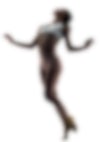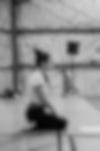What are some shifts (if any) you’ve seen or experienced with regards to representation of Indigenous/ Māori voices in dance?
With the TOMO process, Atamira allowed a Māori practice to be the driver. In past projects, deadlines and outcomes were drivers. In TOMO’s process, we solely focused on the work, gave it power, and took care of it on a whole other level. For example, the show sold out so fast that lots of people didn’t get tickets. We could have done another show but, in the end, we brought in the elders and other valuable community members who had missed out to see the dress rehearsal. There was a lot of protection around the work. Even though people missed out and we could have made more money, we stayed true to what was important.
In terms of the larger world, I’m a bit of a recluse. There’s a growing interest in Māori work. Our mainstream companies are wanting to employ Māori dancers, but require more of a Māori perspective and approach. Watching movies with my children, I am annoyed at how many times Indigenous people are made out to be simple and primitive. Our ancestral knowledge is sophisticated and should be respected.
Time is different for Indigenous people. The knowledge of our ancestors is tino tawhito (ancient) and time is in relation to the natural world. The tides, the winds, the stars, the birds and animals dictated their choices. Nowadays, we try to live by one clock and one calendar, with no regard to the sun and the moon or where we are positioned on the planet. This new form of time disregards our connections to mother earth and the universe.

How does living outside a major city influence your work?
I live in a tiny house that is 2.5 meters wide by 8 meters long. There’s six of us, so we’re outside a lot. My partner and I did this on purpose. In fact, we own a normal-sized family home in Auckland but chose to live tiny to connect on many levels – with our kids, with ourselves, with our environment – to find another way of being that feels a bit more real. This lifestyle choice informs my dance in a way it didn’t when I was living in Auckland. It can be a little bit lonely, as well as a bit scary and vulnerable when I go back into the dance realm. However, that informs my process too. I quickly find what I must rely on. I have to be true to the work. That’s what I have. My work has become more process driven and I now get the dancers to create a lot of movement because I’m not dancing as much as I used to. But I’ve found this is informing my choreographic process in new and exciting ways.
I have discovered some useful task provocations where the dancers’ somatic experience generates their movement material. Once I dreamt of a sound like thunder and drumming, I turned to see hundreds of oranges bouncing down a large stairwell, and my intuition told me hundreds of tigers were coming. In rehearsal soon after, I wanted to explore this concept of tohu (signs) and dream state in my choreography. The dancers were lying inside boxes, experiencing the sounds of oranges rolling over them just like in my dream. This generated the movement I was needing almost instantly.
When I’m in a choreographic process, I stay in Auckland. That means that when I’m working, I’m wholeheartedly working. With Tomo, we staged the piece in under five weeks. There’s no way I could go home to cook dinner, do homework with the kids, clean, and prepare for the next day. It doesn’t stop until 10 p.m. at night with four kids. There’s no time for myself let alone for a creative process. So instead I go back to my accommodation away from the whanau (family). I dive into the work for five days straight and drive home for the weekends. Living in a small town works for me in this way. Thankfully, I have a supportive partner, Estevez, who is also a performing artist, so we take turns holding down the fort.

What’s your next project? What are you working/focused on now?
Atamira’s 20-year celebration is coming up and we are developing something new. The concepts I’m looking at are mauri and mana (life force and power), as well as revisiting older works, some based on our Māori stories and weaving.
Establishing a great way of working in the studio has made me question what is really happening on a spiritual level with dance. I’m looking at what we instill into a space, how we transfer it into ourselves and our movement, and how that raises our mana – the relationship between tinana (body), mauri (lifeforce), and wairua (spirit).










